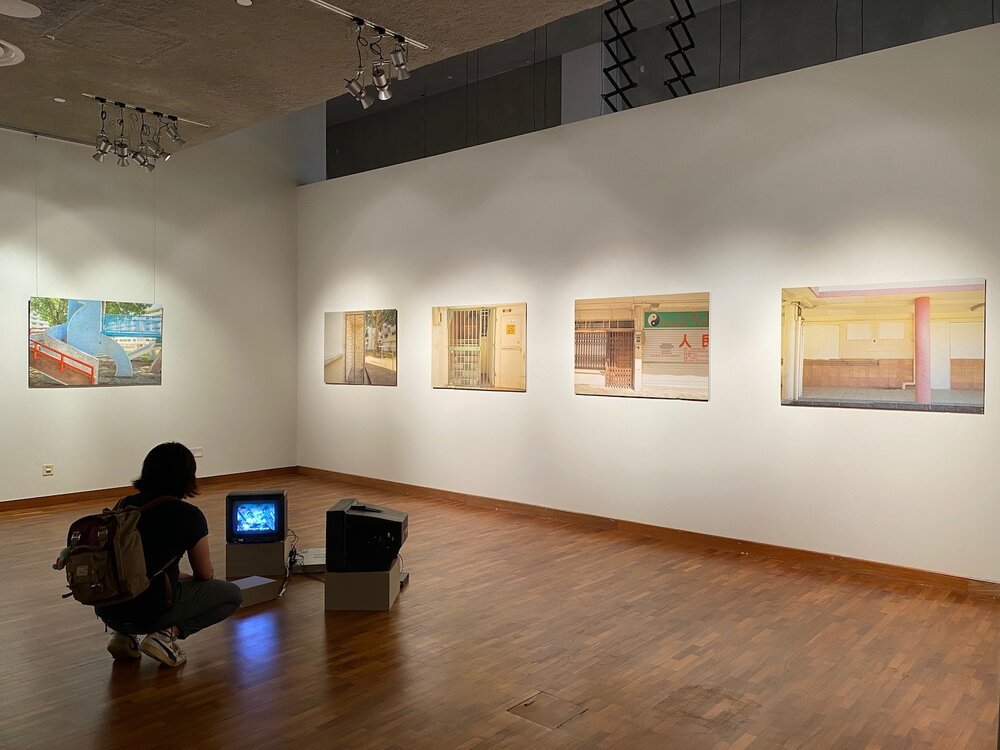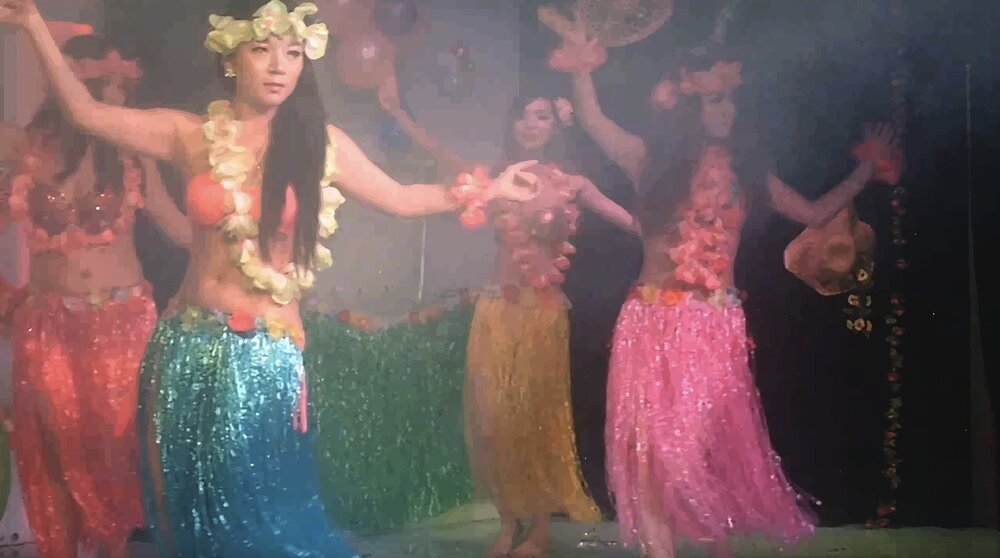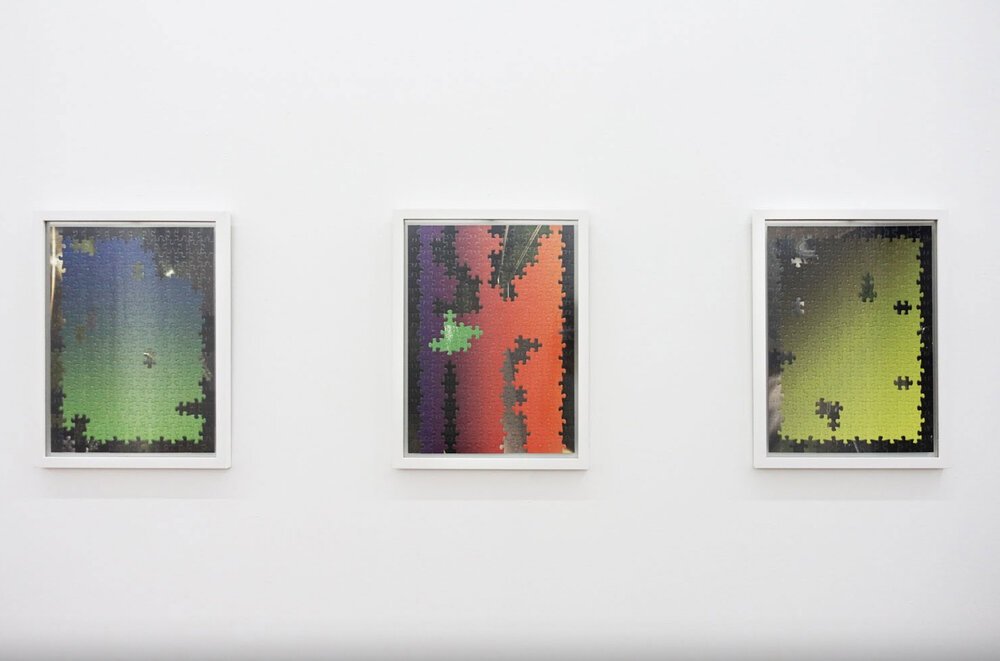Review of ‘How to Desire Differently’
Creating context for transformation
By Vivyan Yeo
‘How to Desire Differently’, installation view. Image courtesy of Nanyang Academy of Fine Arts.
If not for direct interaction, how do we come to know the Other? Whether in the realms of gender, sexuality or race, in what ways do we form mental personas for people we see as different from ourselves? In Singapore, stereotypical depictions of dark-skinned characters like ‘Mao Mao’ (‘Hairy’ in Chinese) in the 2018 Chinese language children’s book ‘Who Wins?’ teach readers to adopt a particularly unfavourable perception of what is deemed as the Other in subconscious and insidious ways. Against this backdrop of media representation, ‘How to Desire Differently’ at Nanyang Academy of Fine Arts, curated by artists Zulkhairi Zulkiflee and Farizi Noorfauzi, triggers important conversations on the re-imagination of difference through its careful curation of works from nine Singaporean artists, available both in the physical gallery and in its online counterpart.
The exhibition adapts its evocative title from the book ‘Black Looks: Race and Representation’ by author bell hooks, effectively mapping the text’s focus on Black subjectivity to a more locally situated need for alternative modes of representation. What stood out to me in the book was hooks’ call to “create a context for transformation” by “making a space for the transgressive image”. Through its foregrounding of subversive and nuanced perspectives from diverse bodies, ‘How to Desire Differently’ does exactly that, creating a platform for artists to both resist and expand conventional ways of seeing. In curator Zulkiflee’s words “Where there are avenues to cultivate ways of engaging differently, it should be desirous.”
Farizi Noorfauzi, ‘No-Corner’, 2017 and ‘Internalised Conversations’, 2020 installation view. Image taken by Vivyan Yeo.
Stepping into the exhibition, I meet a dynamic placement of two different works by Noorfauzi, which intimately pulls the visitor into a space of dialogue. My eyes are first drawn to his photograph series, ‘No-Corner’, which depicts defunct residential areas with stickers that connote the stereotype of a young Malay male ‘lepaking’ – slang for ‘loitering’ with an implication of laziness – pasted onto the middle of the frame. Nearby, I hear voices from Noorfauzi’s ‘Internalised Conversations’, a disjointed combination of scenes from old classic Malay films radiating from two television sets facing each other on the floor. As I sit down comfortably to watch these two screens ‘converse’ with each other, looping narratives about class, marriage and religion, I realise my body position subconsciously mimics that of the ‘lepaking’ stereotype. Looking up at ‘No-Corner’ displayed directly before me, and ‘Internalised Conversations’ on my left and right, I marvel at their strategic placement. Literally and emotionally, they guide me to sit in and listen closely to both societal and internalised expressions of the “Malay social imaginary”.
‘How to Desire Differently’, installation view. Image courtesy of Nanyang Academy of Fine Arts.
The show’s standout work is evidently Rizman Putra’s ‘Sontol Al Loyo: The Legend’, whose soundtrack reverberates throughout the entire gallery space, powerfully immersing other artworks in a critical light. Influenced by the Javanese slang ‘sontoloyo’ – meaning ‘idiot’ – Putra’s video work depicts the artist himself as a fictitious superstar. The idol character cycles through different genres of music, from folk music to glam rock. It is a combination which hints at both a rebellion against the simplified idea of a Malay man and the darker need to shape our personas for the masses.
Zulkhairi Zulkiflee, ‘Malay Boy (Posterior) (after Cheong Soo Pieng)’, 2020, lightbox with fabric print, 87 x 122 cm. Image credits to the artist and Nanyang Academy of Fine Arts.
Putra’s booming soundtrack is unavoidable. With repetitions of the lyric ‘destroy’ in the background, my encounter with works such as Zulkiflee’s ‘Malay Boy (Posterior) (after Cheong Soo Pieng)’ becomes bathed in thoughts about common racial representations. Zulkiflee’s fabric print is a photographic reinterpretation of Nanyang artist Cheong Soo Pieng’s ‘Malay Boy with Bird’, a painting that can be seen to exoticise native bodies. Depicted with a motorbike and a helmet, Zulkifee’s work explores the vernacular phrase ‘mat motor’, which commonly refers to a Malay motorcycle enthusiast. Retaining elements of Cheong’s idealised greenery in the background, the fabric print presents a more media-friendly image as compared to Putra’s unabashed video sequence, which could itself be seen as an expansion of the ‘mat rocker’ perception of Malay masculinity.
Susie Wong, video still from ‘No Woman Dances Alone While a Man is Looking at Her (The King and I)’, 2018, video, 7:05 minutes. Image credits to the artist and Nanyang Academy of Fine Arts.
Another work that provides an intriguing comparison with Putra’s soundtrack is Susie Wong’s ‘No Woman Dances Alone While a Man is Looking at Her (The King and I)’. While ‘Sontol Al Loyo: The Legend’ demands attention through its energetic sound, Wong’s video commands silence. Projected directly on the wall, the latter presents a series of solitary women dancing in their own individual styles. With bodies dancing solely for themselves, the work exudes a sense of freedom and yet, their very exhibition in the gallery space put me into the uneasy role of a voyeur. My male companion to the show, upon reading the work’s title, quickly felt uncomfortable. Indeed, the act of seeing encapsulates within it a power dynamic that oscillates from strength to weakness depending on our gendered identities.
Adeline Kueh, ‘Don’t You See, Baby, This is Perfection’, 2019, digital print on chromaluxe, 30 x 17 cm. Image credits to the artist and Nanyang Academy of Fine Arts.
If visuality is flawed in that we can never wholly represent bodies of difference, perhaps it is best not to attempt a full picture. Beside Wong’s large projection, Adeline Kueh’s 30 cm-wide video still ‘Don’t You See, Baby, This is Perfection’ is displayed as a small object, as if demarcating itself as a tiny detail within a greater, unknown context. Here, she foregrounds the lives of KTV dancing girls without claiming their stories completely, presenting only the video still and ‘Blue Moon’, a close-up video projection of a dancer’s raffia-string luau skirt waving back and forth in slow motion.
Jason Wee, ‘Hedges’, 2019, ‘A Patch of Wood’, 2019, ‘The Light off the Crane’, 2019, installation view. Image credits to the artist and Nanyang Academy of Fine Arts.
Similarly, Jason Wee’s ‘Dances on Their Own’ purposefully uses obscuration to tell the stories of queer bodies. ‘How do I make images of the strategies of secrecy and subterfuge that are sometimes necessary for some desires to survive?’ asks Wee in an audio note included in the show’s online counterpart. With puzzle pieces that present fragmented combinations of extreme close-ups and landscape views, the work self-referentially hints at both the societal censorship of queer bodies, and the related need to hide one’s narrative.
Fitri Ya’akob, ‘To Mother’, 2019, photographic print on vinyl, 227 x 340 cm. Image credits to the artist and Nanyang Academy of Fine Arts.
The physical presentation of ‘How to Desire Differently’ is particularly impactful for pieces that foreground idealised bodies. Fitri Ya’akob’s single photograph from her series ‘To Mother’, for instance, fills up an entire wall of the gallery. Its sheer scale immerses the viewer in a romanticised idea of motherhood, categorising the female role as flawlessly gentle and hiding the difficulties that come with intergenerational trauma. Similarly using the height of the walls, Vimal Kumar’s ‘Transcendental Water Bodies’, too, benefitted from its presentation. In his photograph series, devotees invoke and transform into the female goddesses Mazu, Nyai Roro Kidul and Ganga. Hung from the ceiling in a triangular formation, this pictured manifestation of divine bodies forces the viewer to look upwards in reverence and perform an idolisation of perfect female beings.
Yeo Tze Yang, ‘Getting Back’, 2017, oil on canvas, 122 x 152 cm. Image credits to the artist and Nanyang Academy of Fine Arts.
Perhaps the most visually egalitarian of works in the show are Yeo Tze Yang’s atmospheric oil paintings. Depicting scenes with either bright or dim lighting, stereotypical markers of race, often denoted by skin colour, are weakened as all the figures perform everyday tasks in the same space regardless of their identities. In his online artist statement, Tze Yang wrote about drawing as a child, “I remember trying to figure out whether this or that ambiguous-looking character was Malay, Chinese or Indian, and giving up altogether later.”
All in all, ‘How to Desire Differently’ successfully reimagines difference through a diverse range of voices. By moving away from existing modes of ‘tokenism’, this exhibition provides a space for transformation; it expands the ways in which we can alter, subvert and expand existing modes of looking at others, as well as at oneself.
’How to Desire Differently’ is on view at the Lim Hak Tai Gallery, Nanyang Academy of Fine Arts, from 18 July to 30 August 2020. The exhibition can also be viewed online here.






















